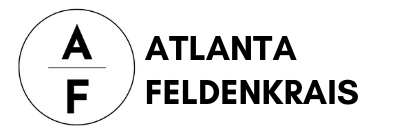The Feldenkrais Method is not a treatment, adjustment, or exercise program. Instead, it is based on decades of research in physics, neuroscience, biomechanics, learning theory, and human development to give you the means to help yourself.
Best-selling author Dr. Norman Doidge writes that neuroplasticity represents “the most important alteration in our view of the brain since we first sketched out its basic anatomy.” We know that neuroplasticity is stimulated through precise, directed attention to a wide variety of gentle and unusual movement possibilities. The Feldenkrais Method® of somatic education thus helps people all over the world to explore their neuroplastic potential.
Read this brief article on the Feldenkrais Method from a student’s perspective
- Reduction in pain
- Injury recovery and prevention
- Improved balance & posture
- More graceful movement
- Improved range of motion and flexibility
- Enhanced artistic and athletic performance.
- Higher vitality and well-being
- Greater mental clarity and self-reliance
Older people and those with neurological disorders (multiple sclerosis, cerebral palsy, stroke) gravitate towards the method as it helps regain function, balance and vitality.
The benefits, however, are not limited to those suffering from chronic pain or recovering from injury. Lack of awareness imposes significant unconscious limitations on all of us.
Elite athletes, dancers, actors, artists and musicians have relied on Feldenkrais for decades to move more efficiently, dramatically enhancing performance and creativity.
In ATM classes, the practitioner verbally guides the group through a sequence of slow, gentle movements. You explore different ways to perform the same movement. By slowing down and paying attention, you provide feedback and options to the nervous system, enhancing self-awareness and improving movement.
In FI sessions, the practitioner works with individual students on a 1-on-1 basis. Using a gentle, hands -on approach, the practitioner provides subtle movement cues to the skeletal and nervous system, suggesting easier, more efficient ways to move.
In both individual as well as group sessions, students often experience immediate improvements in posture, lightness of movement, and freedom from chronic discomfort.
Read this article to know more about what to expect from a Feldenkrais Lesson.
Attending Awareness Through Movement (ATM) classes in the group format is a good way to practice and cement the learning acquired during FI sessions. ATM classes are often recommended as a accompaniment or follow-up to FI lessons. Attending ATM classes on a regular basis is a path towards self-awareness and self-improvement.
Both FI and ATM lessons are gentle, non-strenuous and suitable for people with most fitness levels.
In case you still cannot make up your mind, please send us an email and we can set up a time discuss different options with you.
Please contact us for directions.
We also offer private lessons on ZOOM on request.
Please contact us for more information.
The lesson is done fully clothed, so it is recommended to wear lose-fitting, comfortable clothing which allow for unrestricted movement.
Using a gentle, hands-on approach, the practitioner will provide subtle movement cues to the skeletal and nervous system, suggesting easier, more efficient ways to move.
In the Feldenkrais Method, we believe that the best way to change a movement habit is by first creating viable and better options. Therefore, the sessions have a dimension of exploration which is different from the more corrective or prescriptive forms of therapy.
Through these lessons, the practitioner is not trying to “fix you” but to create conditions where you can learn to sense for yourself which options for movement are easier and more comfortable.
This learning taps into the same mechanism by which you learnt how to move in the first place as a child – through experimentation and play.
After the lesson, it is recommended that you go for a short walk and pay attention to any changes that you notice in the way you sit, stand or walk. If possible, take a short nap to allow the changes to be integrated by the nervous system.
Further Reading: Read this article about what to expect from a Feldenkrais lesson
Private lessons are 50- 60 minutes long. The first private session is longer, from 60-75 minutes.
You may see a significant change in the first lesson itself. In both individual as well as group sessions, students often experience immediate improvements in posture, lightness of movement, and freedom from chronic discomfort.
However, in longstanding or acute conditions, it may take longer. In the Feldenkrais Method, we are looking to learn new habits and ways of movement. Ones that allow us to function with more ease and comfort.
There are as many ways of learning as there are people.
Many of us have grown up with the adage of “no pain – no gain.” Pain during learning is not only unnecessary, it often detracts from the learning itself. This attitude itself may take some time to take root.
New, more efficient habits may take some time to form, but we reap their benefits for the rest of our life. As we begin to learn easier, more comfortable ways of moving, we also improve our posture, balance & flexibility.
There is a reduction in pain and chances of injury. Our movement itself becomes more graceful and there is less wear and tear in the body.
As we age, these habits keeps us healthier, more productive and self-reliant. People who have been doing the Feldenkrais Method tend to be more active in their later years.
In terms of number of lessons, we suggest a series of 10 lessons to begin with.
We also offer packages on request. Please contact us for more details.
In the News: Recent articles on the Feldenkrais Method®
- New York Times (January 2021)
- New York Times (October 2017)
- Washington Post (September 2018)
Books on neuroplasticity & the Feldenkrais Method®
Books by Dr. Moshe Feldenkrais
Biography Of Dr. Moshe Feldenkrais
Other Resources
